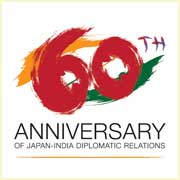Going beyond the Okamyoma garden and Origami classes, the city’s relations with Japan are getting a boost now in the form of a Marathi-Japanese online dictionary. As a part of the celebrations of 60 years of diplomatic relations between India-Japan, the government there has funded a project to build online Marathi-Japanese dictionary. About 30-35 volunteers from the city are contributing in this project.
The Online Verb Handbook will be one of the first of its kind. The project is launched by Dr. Prashant Pardeshi, Professor of Cross Linguistics in National University of Japanese Language and Linguistics (NINJAL), Tokyo. He and his 7-member team has identified basic verbs in Japanese language and they are providing complete explanation in Japanese, about meanings of the verbs in their various shades and numerous examples of their usage in sentences, idioms, proverbs, and even example of wrong usage (for avoiding common mistakes of usage) and so on. It also consists audio information (for accurate pronunciation) and animation (for proper understanding).
A team of volunteers from city is taking care of translation of the Japanese explanation into Marathi. The team consists of Dr. Hari Damle, Salil Vaidya and other Japanese language teachers. According to Dr. Damle, the project assumes significance that it is precursor to other languages. After completion of this project, similar verb handbooks will be prepared in other languages like Chinese, Korean and English.
For editing this handbook, Prof. Kiryu from Mimasaka University has developed an online editor, which enables simultaneous editing of the handbook from different countries. The work is expected to be completed in an year.
A workshop was recently held at the Mahratta Chamber of Commerce, Industries and Agriculture (MCCIA) about the nuances of this project. During the workshop, Prof. Pardeshi spoke about earlier efforts in this direction. He exhibited a copy of his earlier Japanese-Marathi basic verb dictionary in printed book-form. He added, “The present handbook is the first of its kind in the sense that it is the first attempt in Japanese to compile such a work using a large scale database of written Japanese.” Prof. Yasunari Imamura
Prof. Pardeshi is a Puneite by birth. After securing education in Japanese from Pune and New Delhi, he compeleted Ph. D. from Kobe University.
The Maharashtra-Japan Relations
The relations between Japan and Maharashtra, especially Pune, share common bonds. Adv. Sameer Khale, president of Association of Friends of Japan, told Pune Mirror, “The grammar of both languages is same. That is why it is found that Marathi students acquire Japanese language more easily than others. There are about 500 families or 2000 Maharashtrians living in Japan now. This dictionary will facilitate to all those who want to learn Japanese without knowing any other language like English.”
Dr. Umesh Joshi vice president of Mombusha Scholars Association of India, said, “This is the first Japanese dictionary based on verbs. This dictionary will take the natural language to common people beyong academic circles. Most of all, it will be free of cost.”
Dr. Saroja Bhate, veteran indologist, said, “The relations of Maharashtra and Japan are very deep. There used to be an annual issue named Maharashtra. Also, Acharya Atre’s famous book Shyamachi Aai was translated also in Japanese.” Dr. Bhate said that there is a tremendous interest among Japanese for indology and given their lesser skills in English, these types of projects will bridge a wide gap.
The commonalities
The basic structure of Japanese and Marathi are too similar viz. subject-object-verb. The particles in Japanese are closer in meaning to Marathi. Even some words have the same meaning. For example, Marathi ka and Japanese ka means why. Dr. Damle informed that even some proverbs in both languages astounding similarities. For example, the equivalent to Marathi bhintila kana astat (walls have ears) is khabe-ni mimi aari in Japanese.









0 comments:
Post a Comment